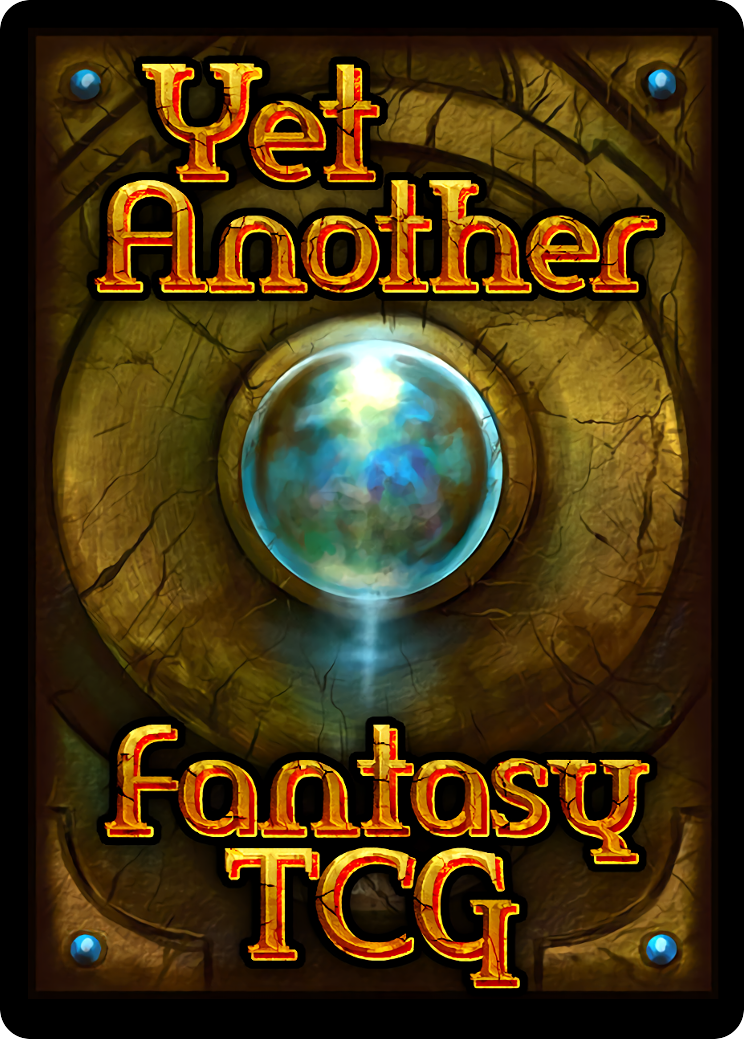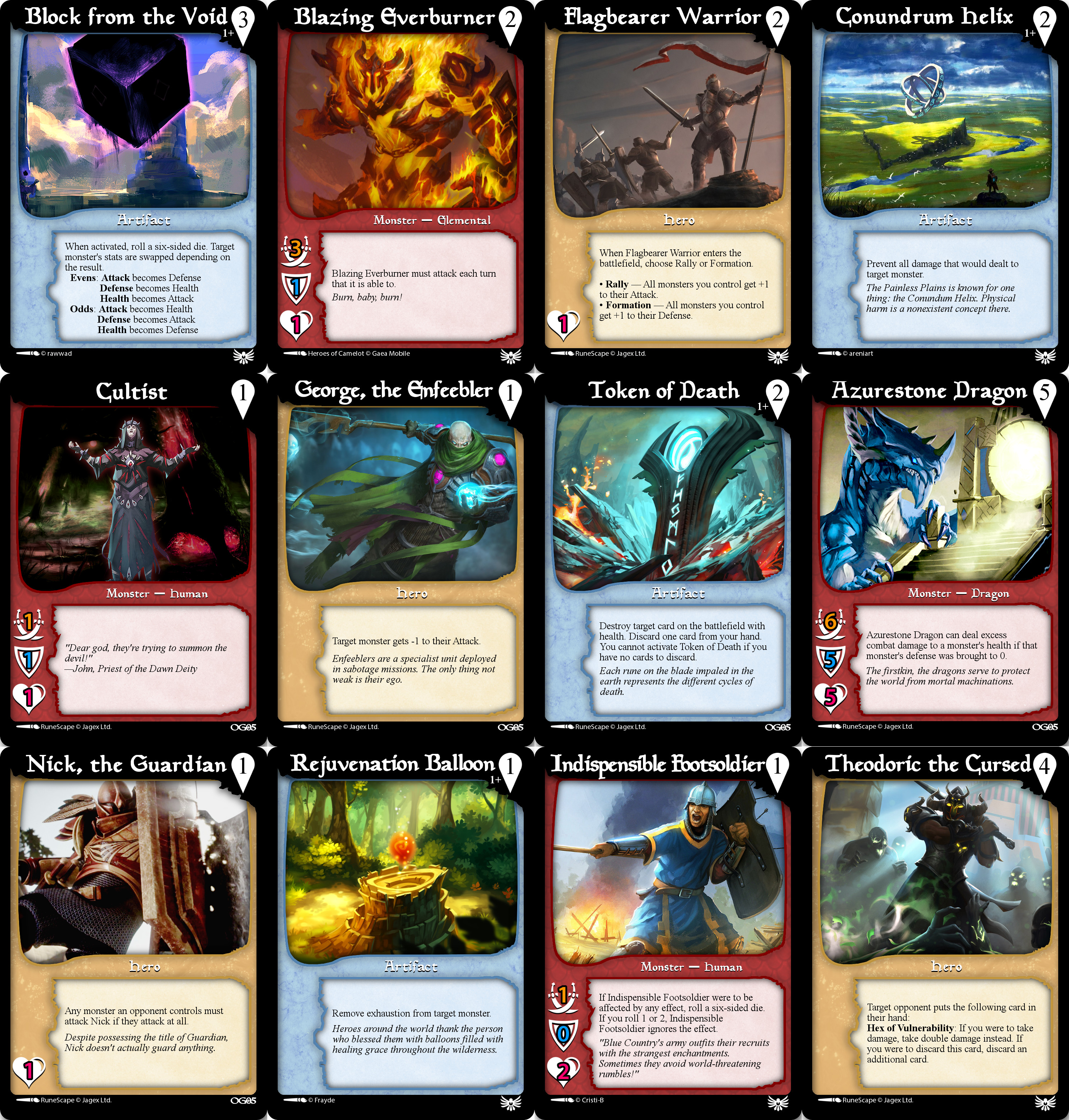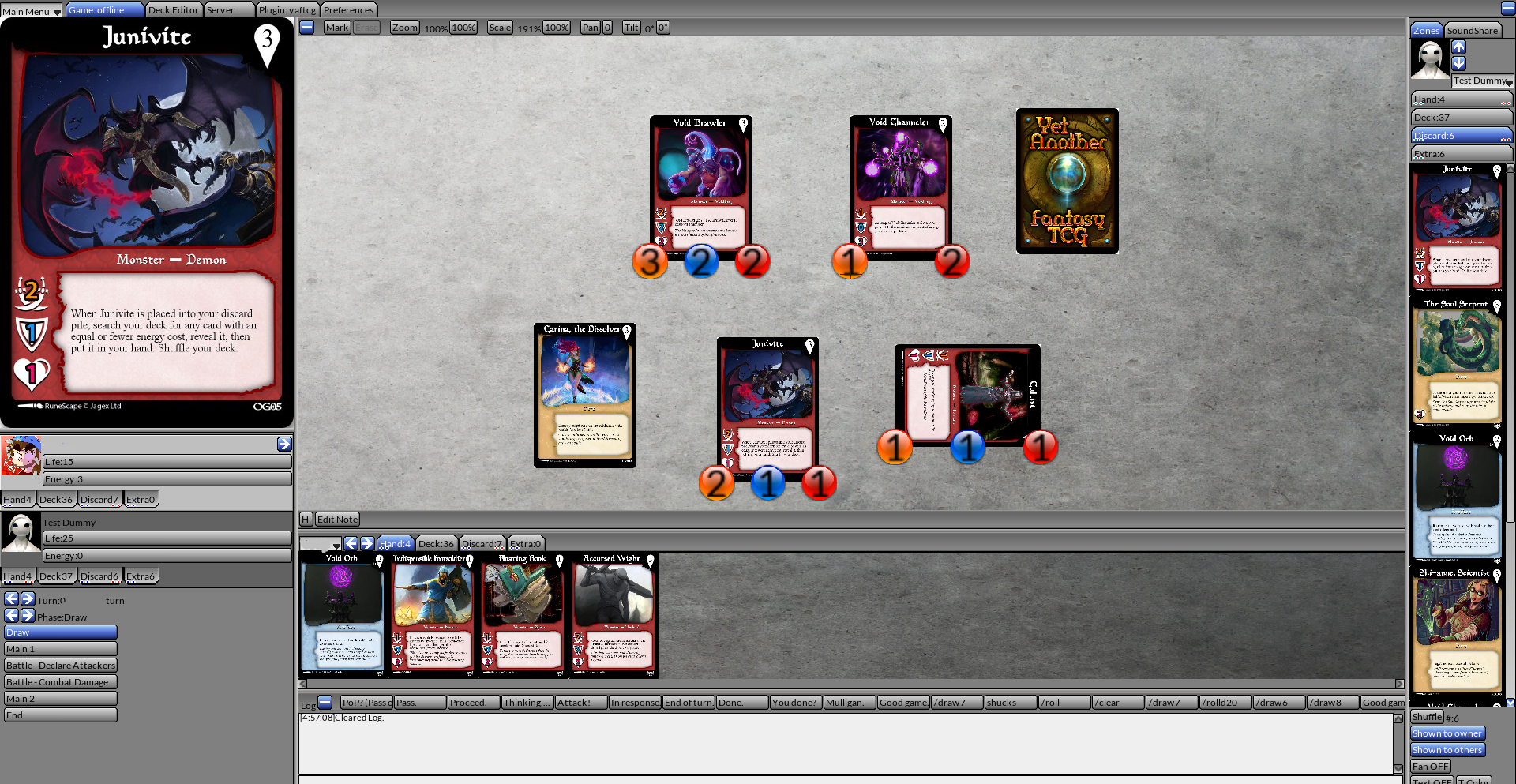
December 2016 - June 2017
Back in 2005, as a small child, I created a trading card game to rival the growing prominence of other trading card games at my school. I based it off my favorite game at the time, RuneScape. After discovering these ancient cards over a decade later, I decided to remake the game as a tiny pet project. While it isn't based off of RuneScape anymore, I tried to make it more generic to fit a classic trope in the Trading Card Game industry, where lots of games have a boring, uninspired design to them.
 A sample of the redesigned cards.
A sample of the redesigned cards.I redesigned all of the 10+ year old cards to a new system I designed. In addition, I designed a new set of cards to fit unexplored niches within the game. Creatively designing cards and mechanics to work with the existing game systems was a challenging exploration. How well do certain cards synergize with others? Do some cards completely deny or demolish others? Do some make for exciting and thrilling games? Do some cards reduce the interactivity of games, and thus the players' fun? These were all factors to consider behind the creation of every card designed for Yet Another Fantasy TCG.
Designing the game was a multi-step process. First, I used simple paper-based elements to playtest core mechanics and determine if particular aspects were a just fit for the game. Then, I went and graphically created a card template using hand-drawn icons and several graphic design techniques in the free image-editing program called GIMP. Afterwards, I meticulously built each card with the same program using images found online. Each artist was credited for each card.
To fully playtest, I imported my game to a program called LackeyCCG, which can simulate any tabletop card game, and played the game with friends. With valuable data of these playtest sessions, I tweaked statistics and mechanics as necessary.
 Yet Another Fantasy Trading Card Game being played on LackeyCCG.
Yet Another Fantasy Trading Card Game being played on LackeyCCG.Incorporating the game to LackeyCCG took some effort. In order to import a game in this program, you have to create a "plugin" to work with the software's format. This means specifying each property of the game, including its turn phases, player commands, deck sizes, hand sizes, etc. It also means manually detailing all of the mechanics so that the program can learn to automate turn phases. In addition, I had to import each characteristic for every card I designed. LackeyCCG utilizes the XML format.
As for the actual game design itself, I intended for the project to be as generic as possible while still possessing unique and interesting qualities about it.
Each player begins with 20 Life, a deck of 50 cards, and draws 7 cards to their hand. Each turn, a player has 5 Energy they can expend to play cards on the battlefield.
Monster cards can battle other monsters or attack the opponent directly. They have three main stats, Attack, Defense, and Health. If a monster attacks another monster (you cannot attack the opponent directly if they have a monster on the battlefield), the monster must lower the opposing monster's Defense to 0, then their Health to 0 before they are placed in that player's Discard Pile. Reducing a monster's Defense to 0 stops the battle from progressing.
Hero cards provide special effects for the battlefield, such as increasing a friendly monster's Attack, gaining Life, and more. They are usually played once for their effect and are placed int he DIscard Pile unless specified otherwise.
Artifact cards are similar to Hero cards. See, when playing monsters or heroes, you must play them only on your turn's Main Phases. Artifacts are similarly only played on your turn's Main Phases, however, they must be played face down for 1 Energy. Then, at any point, the player may activate that Artifact for its effect, revealing it face-up! Think of it like a... trap card.
These simplistic mechanics allow for much diverse effects in its system. Some monsters can affect others' Defense. Some heroes have interesting abilities where they can freeze cards in time, draw an opponent's card, steal an opponent's monster, prevent the opponent from targeting your own monsters, and so much more. It allows for several niches to be explored with many different archetypes supported in the format. Since everyone has access to the same cards, the only limit to deckbuilding is the player's imagination!
Before starting the process of redesigning the entire game, I wrote a comprehensive ruleset document for the original, 10+ year old card game. If you wish to peruse it, it can be downloaded here. Back then, I unironically named the trading card game Fight Club.